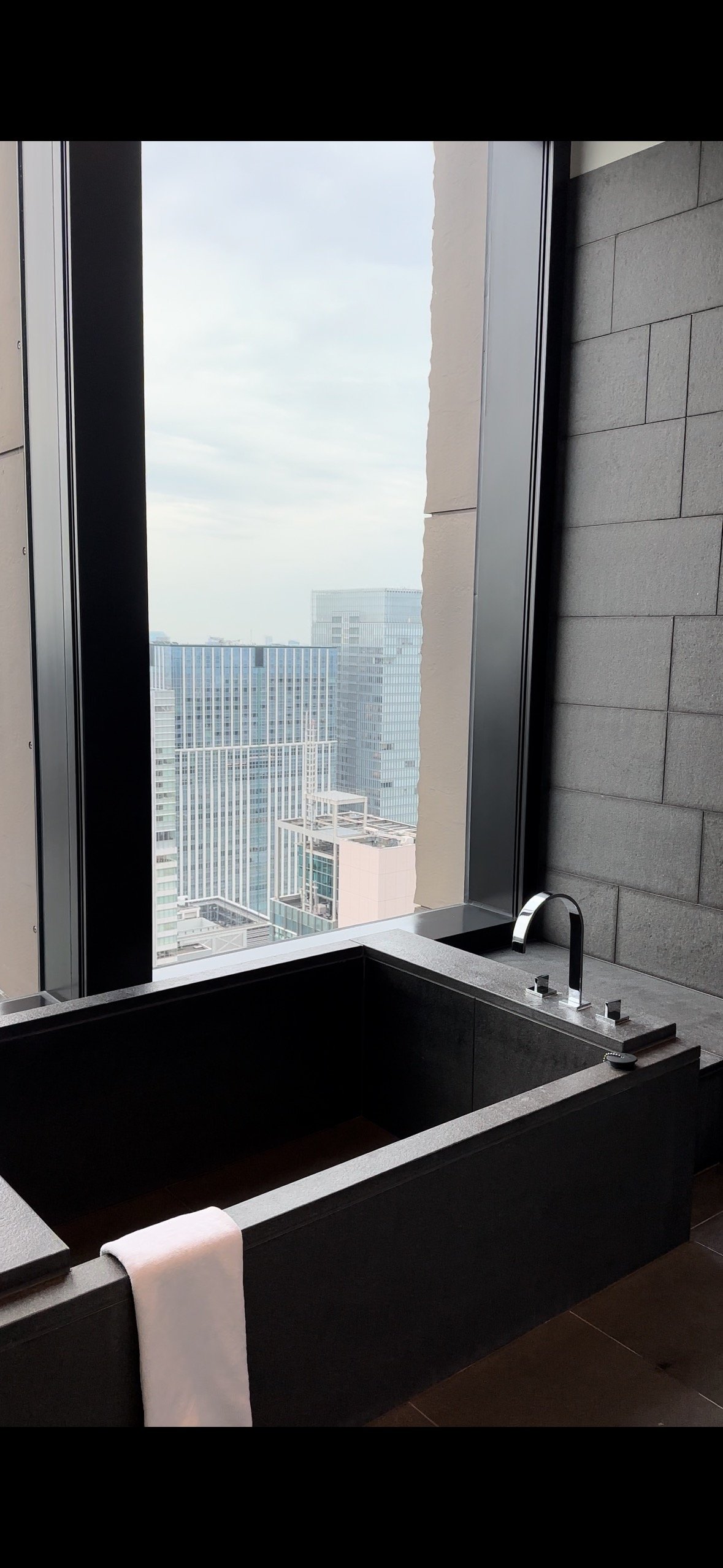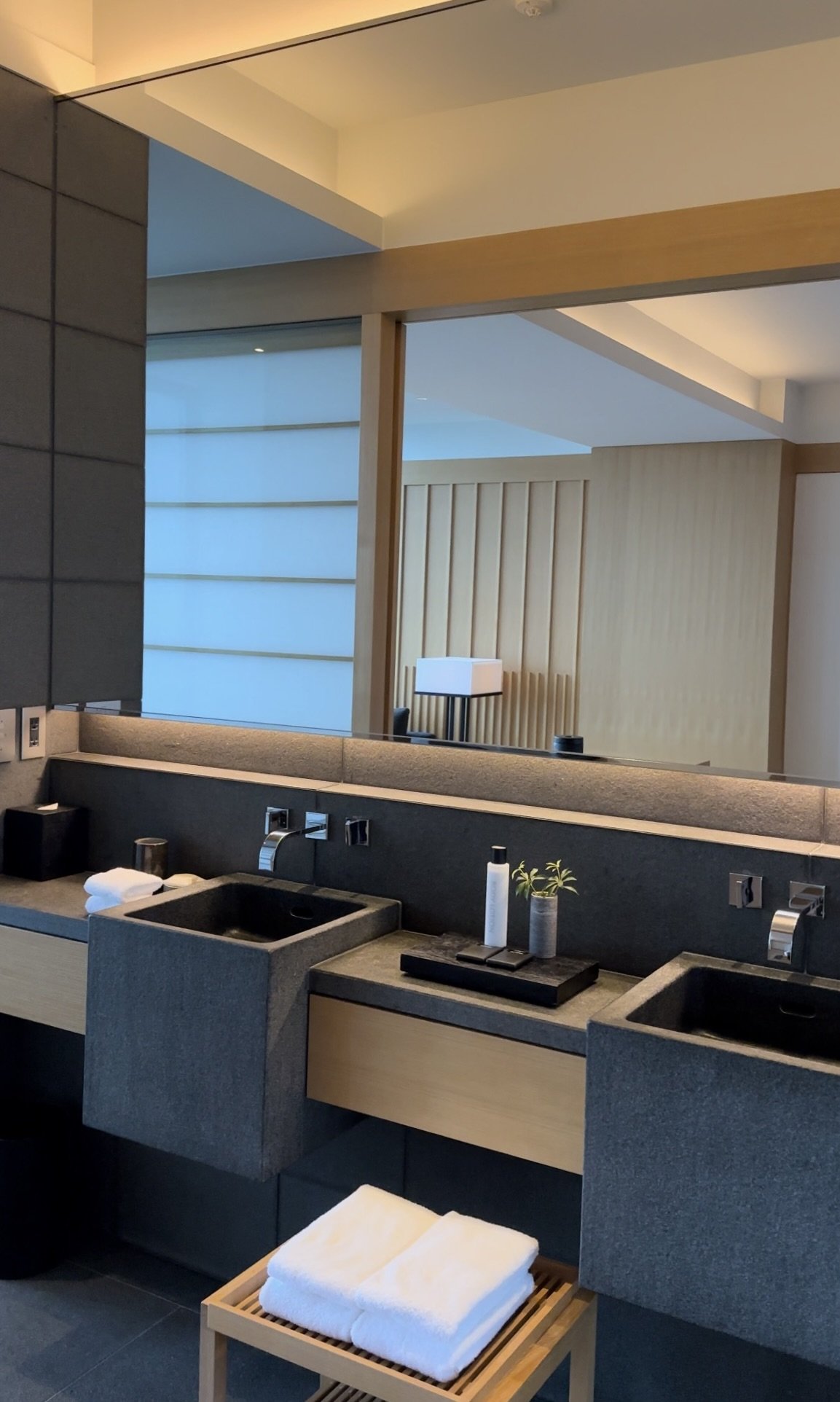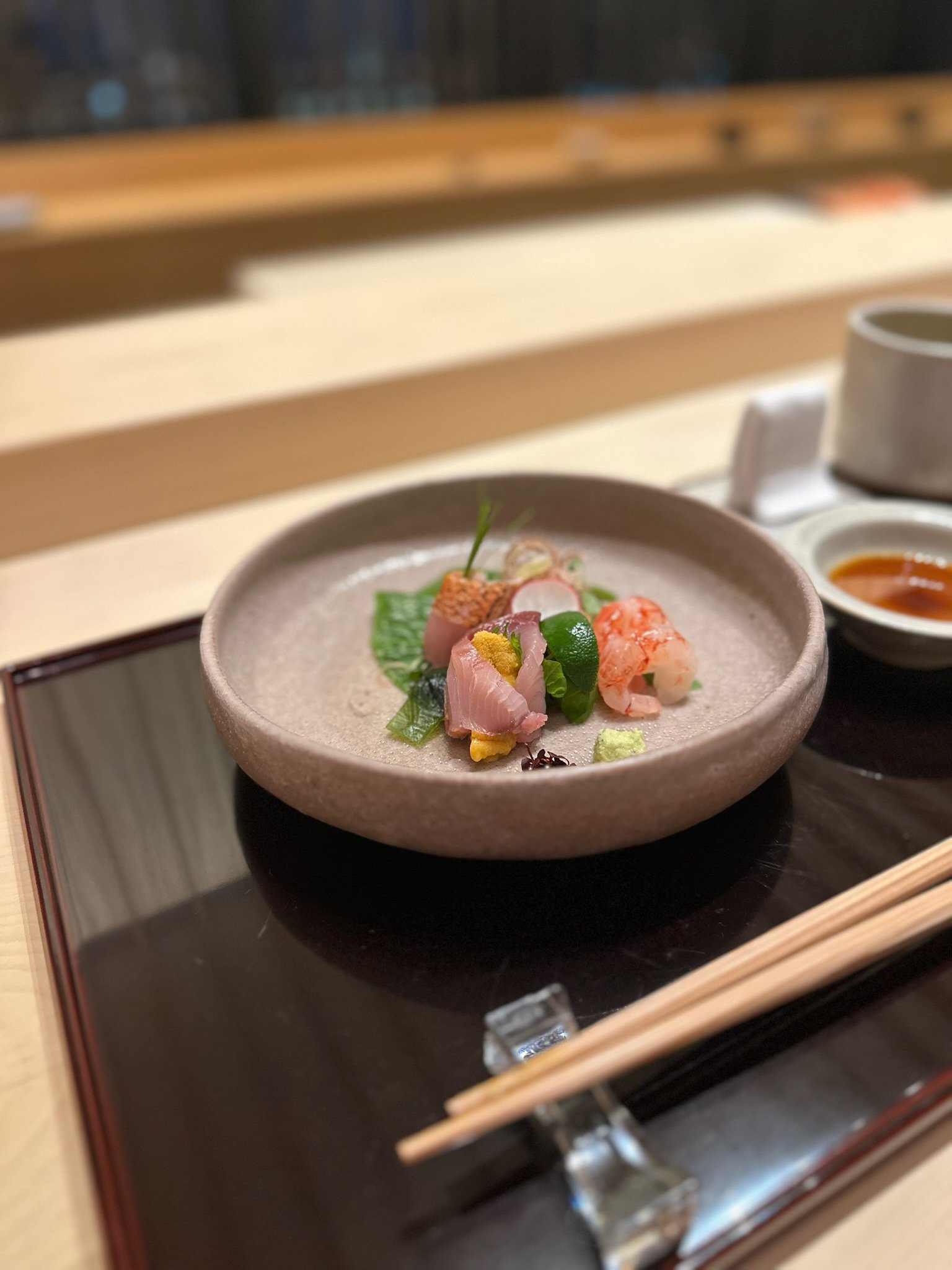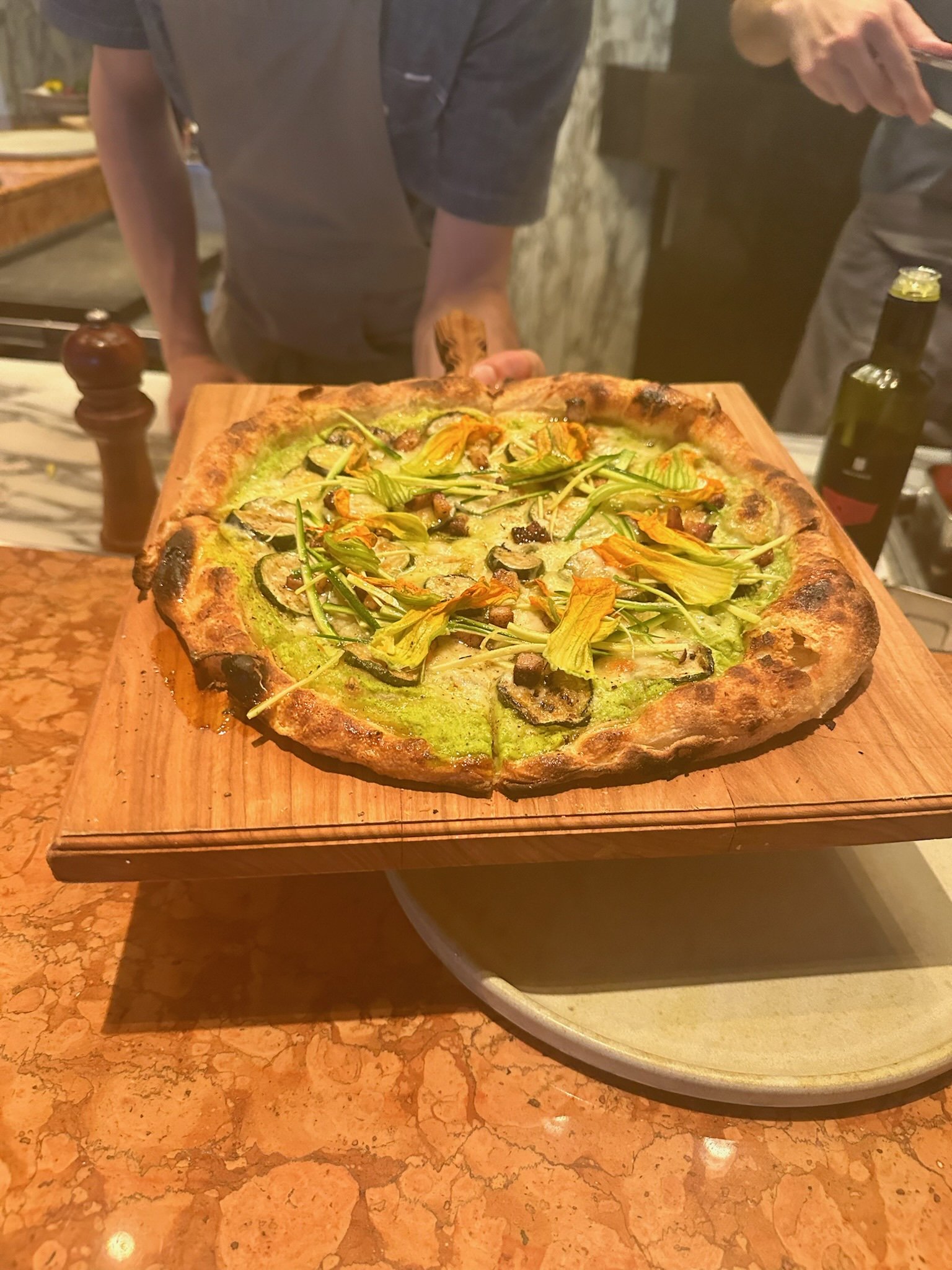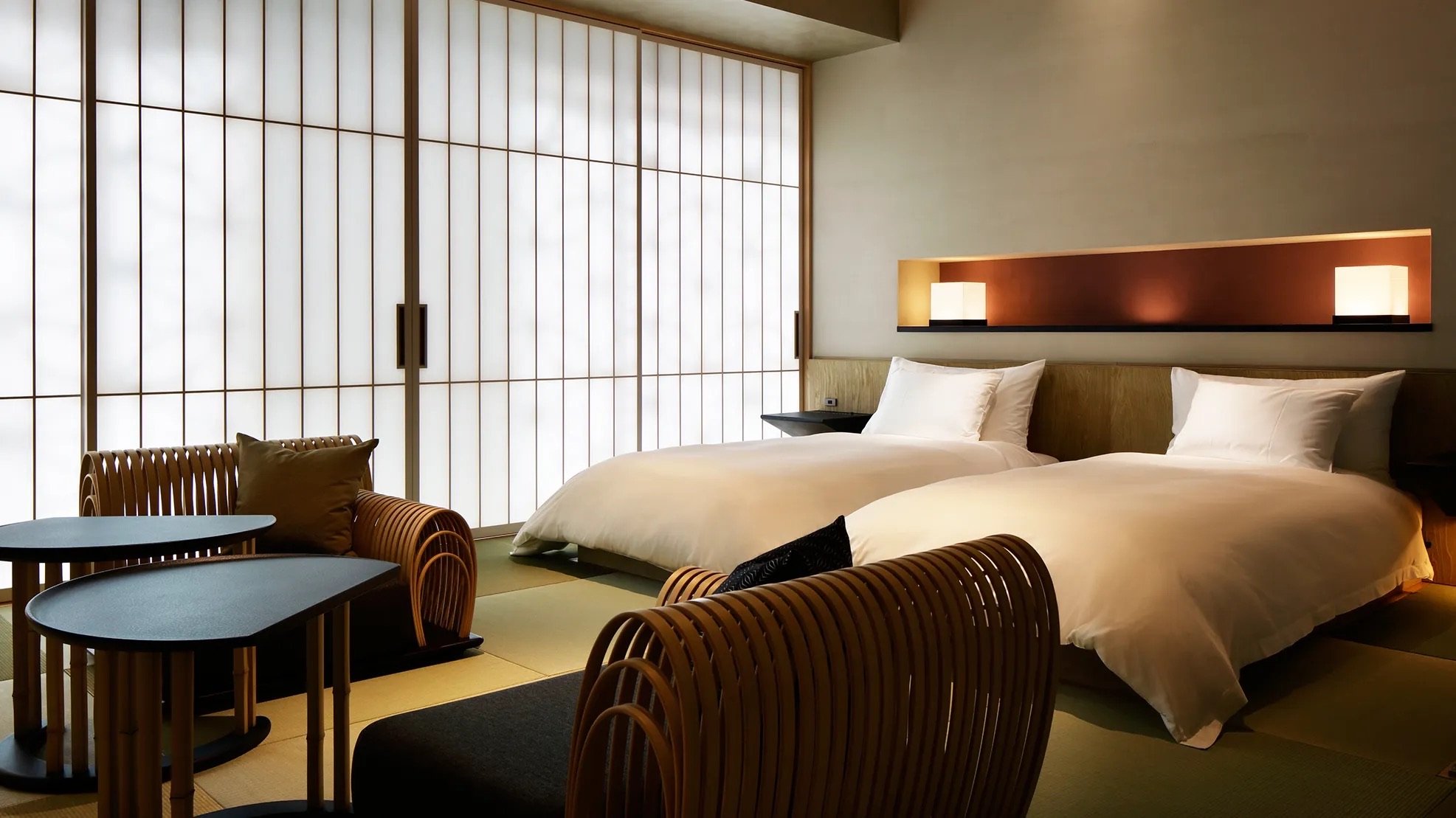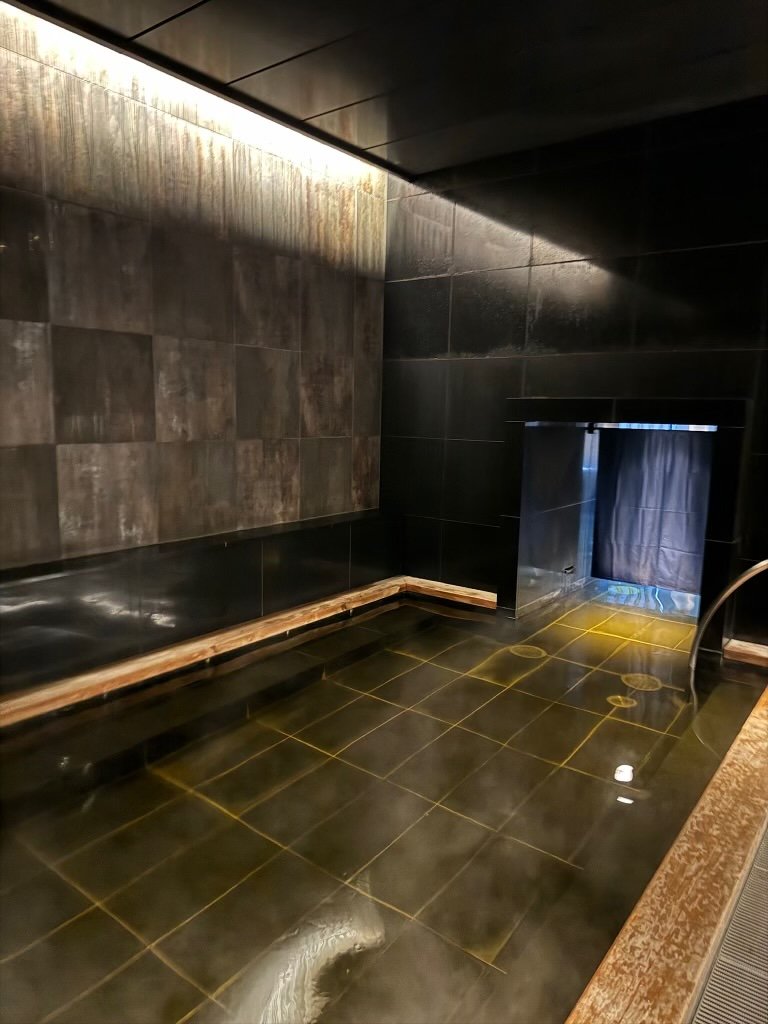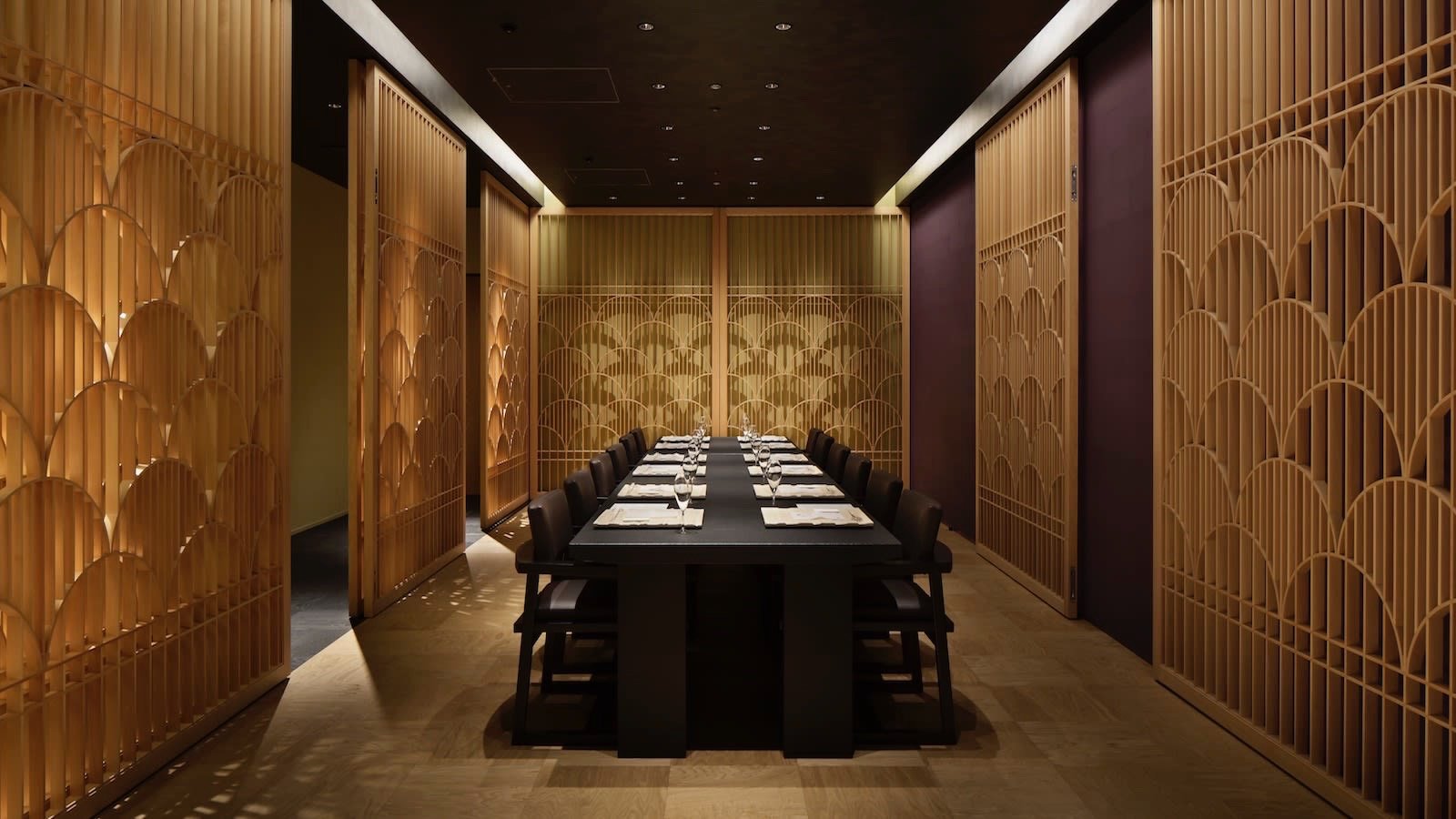Tokyo Hotels
There are so many beautiful options for accommodations when staying in Tokyo: ryokan style, classic modern, and those hotels that offer a kind of in-between – or a modern spin on traditional design. The following is a curated list of hotels compiled by a recent visitor to the city and myself. This piece will continue to expand and evolve as more hotels are included; these first five are hotels I visited during a recent trip to Japan.
The Aman Tokyo
The Aman was my favorite of the hotels I visited, and it also had the most beautiful lobby. Designed as a modern take on the traditional ryokan style, it had a zen, calming feel. The walls were lined with this beautiful gray stone, and a reflecting pool sat in the middle of the space, encircled by low, modern couches. The concierge was tucked away in a room off to the side, and beside the elevators was a simple reception desk. The vibe matched the design; no one spoke above a whisper in the lobby. It was a breath of fresh air after a long flight.
The rooms were modern, minimalist, and beautifully done. The floors, walls, and furniture were made from the same kind of wood, making the space feel both sizeable and cohesive. The bed was a king that could be separated into two twins; it sat in the room’s center, looking out at the skyline through a set of windows that reached the ceiling. The bathroom shared this minimalist feel. The floor and walls were made from a matching gray stone, the same kind as that of the lobby, and the bathtub had a spectacular view of the city. I adored the bath salts they provided – it’s the little things that make a hotel room special!
If you need extra space, Aman's suites feature living and dining rooms, small kitchenettes, and an office space that can be closed off by a pocket door. This would be ideal if you are traveling with small children – the suite’s living room is the perfect space for a rollaway bed.
Anyone who knows me knows I love seeing what welcome goodies are provided; I find that they really personalize a hotel, especially upon arrival. We were greeted in our room by a black lacquer box of cherries and blueberries, and each night they left us either sweets or a trinket related to a traditional Japanese ritual. Everything was beautifully packaged – one of the many little things I love about Japan is the care they take in packaging. It is something I can’t help but appreciate!
Breakfast was served in Arva, the hotel’s restaurant that shared the design features of the lobby. The menu was a la carte and delicious. I preferred the Western (more American) breakfast, but my son preferred the Japanese breakfast.
Off of the lobby and up a set of stairs was a small outpost of Musashi. We had dinner there, and I found the sushi to have an overly peppered taste. It wasn’t melt-in-your-mouth delicious, but we did sit near a famous British soccer player and his clothing designer wife – so that is something!
The Aman had an impressive boutique that was relatively hidden, tucked away behind the lobby. Most of the quality pieces were for men, but it would be a good place to find a decent last-minute gift.
The hotel’s gym and spa were lovely, and the pool was spectacular. It was incredibly large, lined with day beds, and had large glass windows with a jaw-dropping view of the city. I didn’t have any treatments done, but in my experience with the Aman, the spa consistently delivers a high-quality experience.
While I adored the property, my only disappointments with our time at the Aman were the concierge and its location. In the months leading up to our stay, I had two calls with the chief concierge. He was extremely helpful and responsive at first, but my later calls and emails in the weeks leading up to the trip went unanswered. I wanted to make and confirm reservations, but I never heard from him – not even after we’d arrived.
The team onsite couldn’t help us get any last-minute reservations so most of the reservations before my arrival were taken care of by The Four Seasons concierge team and my friend/guide on the ground.
The location is more of a business district; you are not strolling out of the lobby into Ginza or another ‘walkable’ district – taking a car/the subway was necessary.
Tip — for those of you planning a future trip to Tokyo, take note! I had planned a dinner on our second night, and we were so jet lagged that I asked to move the time or move it to another day. The concierge was unable to help, and the restaurant charged me a hefty fee as a penalty: 1.5 times the cost of the prefix menu. From my understanding, a lot of Americans come to Tokyo with booked reservations but wind up having to cancel because of jet lag. I would advise taking into account how tired you will be and plan accordingly. The penalty exists because some restaurants only host eight to ten guests at a time, and they want to serve the freshest food – so to be cost-effective, they order only enough produce to account for the guests scheduled for that evening. If guests routinely canceled, the restaurants would not survive.
Furthermore, Tokyo is not the kind of trip ideal for a large group, especially when it comes to dinners. Most of their restaurants are very small, especially the special sushi restaurants. Parties of more than six or eight are a difficult reservation to make.
The Four Seasons Otemachi
I have to give a big thank you to the management and concierge team at the Four Seasons for all of the work they did pre-arrival to secure lunch and dinner reservations. They even booked the reservations for the nights we were spending at The Aman.
When I walked into the lobby, my first impression of the Four Seasons was, Oh, I am back in the United States. Everyone was speaking English, Americans abound. It had the New York hustle and bustle atmosphere.
The room at the Four Seasons was spacious but didn't share the same ryokan style as the Aman. It had a sophisticated, modern design with grays, beautiful wood built-ins, and my favorite feature was the windows in the bedroom. They formed an L-shape around the room’s corner, providing this incredibly unique view. The bathroom was modern with a separate bathtub and shower. The gym and pool were both sizeable, but the view from the pool’s windows didn’t have the same ‘wow’ feeling as the Aman – it felt more closed in.
Off of the hotel’s main restaurant Pigneto, there was a gorgeous outdoor terrace where we would eat breakfast in the mornings. The weather was around 70 degrees and perfect every day — so breakfast was always lovely!
One night we went for drinks at Virtu, the bar hidden off the main lobby. It was a nice, dimly lit room that wasn’t crowded, and the bartenders were kind enough to find a rare bottle of alcohol we were interested in, and they even made us a specialty cocktail using it.
Location-wise, the Four Seasons was just around the corner from the Aman, so it also required getting in a subway or car to explore the city. If people like to walk, it is definitely doable – just long. The concierge seemed a bit overloaded with requests on-site, so I am glad I organized everything ahead of time. They did work hard to try to secure us baseball tickets for a game one evening when we wanted to attend last minute. Unfortunately, they weren’t successful, but we went down to the stadium and purchased tickets there.
Tip — check out Tokyo’s baseball scene! Seeing a game is such a fun activity to do, even if you aren’t the biggest fan.
The Mandarin Oriental
The Mandarin Oriental was not far from the Aman and the Four Seasons, and we stayed there for one night. While there were some traditional Japanese elements in the design, it felt rather vanilla (despite the 2019 renovation).
The room was similar in size to that of the Four Seasons, and the bathroom was large but a little old-school – especially these wooden shades that partitioned the tub from the rest of the space. The hotel’s public spaces felt dark to me. Maybe this was because of the color palette – lots of golds, deep purples, browns, and oranges. For breakfast, they had a small buffet and an a la carte menu, which was decent.
Regarding service, I felt that several members of the concierge team were in a training program or new to the position. They were not familiar enough with the city to help us, for instance, by pointing us to the right subway lines.
While the Mandarin Oriental had a few restaurants, we only went to The Pizza Bar on 38th, and it did not disappoint. They serve a pizza omakase, really a pizza-tasting menu. The chefs, both from Italy, were so kind and conversational. We started with focaccia, and the chefs made several different pizzas, each of us trying a slice. The food was delicious, and the experience was incredibly fun. My son (who LOVES pizza) joked that he could eat a whole other pie. They offered to make one for him and sent it to the room, going above and beyond!
The Peninsula Hotel
Out of all the hotels I visited in Tokyo, The Peninsula Hotel had the best location. I stayed here a few years back, and I loved being able to walk out of the lobby and explore the surroundings, which I only did here. Accessing other areas of the city was easy too, as there is a subway station directly beneath the property. It is a five-minute walk to the Ginza area, where a lot of the restaurants and shops are.
The Peninsula is probably the oldest of the properties we visited. Built in 2007, the rooms have not been renovated but retain a spacious, classic feel. A big plus was the great walk-in closets. They offered plenty of connecting room options for those traveling with children. The guests at the Peninsula were fairly international. I noticed that a lot of business people stayed there and held meetings on the property.
The service was excellent. On our first day, when we didn’t know how to get to the subway from the lobby, the concierge escorted us downstairs, demonstrated how to buy tickets, and watched to make sure we got on the right train. I definitely appreciated that level of care.
The only downside of the Peninsula was the location of the breakfast. They served it in the main lobby, not far from the entrance. The lobby was bustling – people checking in, people crossing the lobby for the elevators, and people trying to eat their breakfast. I prefer that the lobby be just the lobby, a restaurant just a restaurant. That being said, I probably care more about breakfast than the average visitor – so if you don’t mind the bustle, the Peninsula would be perfect for you.
The Tokyo Edition Toranomon
I stopped by this Edition property for a drink based on a recommendation from someone I know in the food industry.
While the interior was beautiful – with whites, light woods, lots of foliage, and an indoor-outdoor space – it felt more NYC/Miami vibe than Tokyo. That being said, the property was cool and hip. For someone wanting a more modern hotel, this would be a good option.
Tip— A new Edition just opened in the Ginza area.
I also spoke with a recent guest of the Trunk and Hoshinoya Hotel in Tokyo to get her thoughts. She was traveling with her husband and her two sons, both young adults.
The Trunk Hotel
On the vibe of the hotel:
The Trunk was a modern take on the traditional Japanese housing style. It was a very hip hotel, and the lobby was buzzing with people drinking coffee and having meetings. It wasn’t one of those massive hotels; it was on the smaller side. The building itself is low-rise with only three floors. We absolutely loved it.
On why they chose the Trunk:
We chose it for value, as the price was right. It was a fraction of the high-end hotels, and it was the perfect welcome to Tokyo.
On the location:
The Trunk was in Shibuya, a really cool and exciting neighborhood. The location was incredible: we took advantage of the neighborhood every day. Right after we arrived, we went out for a little walk, and immediately we were immersed in the youth and shopping culture of Japan. We loved Shibuya, but most of our dinners were in Ginza, which is about a fifteen-minute drive from the Trunk.
On check-in:
The check-in process was easy and efficient. We arrived at 5 PM, and the rooms were ready. They had pajama sets waiting for us on our beds – a kind of welcome amenity.
On the rooms:
I would call the rooms traditional but technologically savvy; not exactly luxurious, but I had no complaints. We stayed in three rooms on the second and third floors: a standard, a standard plus balcony, and a standard plus loft. My husband and I were in the standard plus loft. Design-wise, the traditional elements of the ryokan style were present: the beds were on the floor, and there was a ton of natural light. There wasn’t a closet so we asked for a luggage rack. Our room had a loft that we didn’t use, and I saw pictures of suites that had bunkbeds – both of these options would be perfect for families with young kids.
The only small negative was the size of the bathroom. It was tiny, with one sink and no counter space for toiletries. I had to put everything on the floor.
On the food:
The hotel’s main restaurant was Trunk Kitchen, where they served breakfast. It wasn’t included but was very inexpensive. The food was okay, and I believe it was open for lunch and dinner – but we went elsewhere for those meals. There was another restaurant on the property called Yakitori. Unfortunately, we never went, but the food looked delicious. Every time we’d pass by the smell was beyond. The hotel also had a fun bar in the lobby and a coffee place where we sat outside.
On the service:
The staff was very helpful and spoke great English. They had this great door concierge who we would consult often while coming and going; they were knowledgeable and friendly. The concierge team would confirm all our reservations the day of, even if they hadn’t made them for us, and they informed the restaurants about food allergies.
Hoshinoya Hotel
On check-in:
The Hoshinoya is located in this beautiful office park area, but if you are arriving by car, you have to enter through an underground tunnel and parking lot. It wasn’t a gracious way to enter. We joked that we were being kidnapped. You could walk into the hotel from street level, but you couldn’t arrive with your luggage that way. We also had to fill out several forms upon checking in, and I wished they would have sent them to us in advance.
On why they chose the Hoshinoya:
We wanted to stay at a ryokan and have a relaxing experience at the end of our trip before heading back home. It was an incredible hotel, a great respite from the bustle of the city.
On the vibe of the hotel:
It was really zen. The property was beautiful.
On the room:
We stayed in two rooms, both in the ryokan style: beds on the floor, one closet, a few chairs. My husband and I were in the Yuri room with a king bed, the boys were in the Sakura, a deluxe twin. Our bathroom was spacious, and the bathtub was this modern take on a traditional soaking tub. There was this cool partition feature that separated the bathroom from the room – you would press a button, and the glass would fog up, providing privacy. The interior design was beautiful, using elements like traditional rice paper for the doors.
Each floor of the hotel had a central lounge, with three rooms on one side and three rooms on the other. In the lounge, they had snacks and teas and craft activities, so on our first night there I made a fan. They are aiming for a communal feel, but we didn’t really interact with any other guests.
On the location:
It was across the street from the Four Seasons. I would say it was convenient, but you had to take a car or subway everywhere. The subway station was easy to navigate, though.
On activities at the hotel:
We did a gardening class and a morning exercise class. They also offered a tea ceremony, among other things. Some activities were complimentary, others weren’t – but they were priced reasonably. The hotel is known for its spa, and I had this amazing massage in my room, one of the best I’ve ever had in my life. We made use of the onsen, which was beautifully appointed with lots of products. It was really magical.
Regarding the spa, I would definitely advise booking all treatments well in advance of your arrival. There are a limited number of slots available, especially compared to the number of guests.
On the food:
There was no official restaurant in the hotel, but they served breakfast and dinner either in your room or in this beautiful dining area on the lower level, full of private dining rooms. We ate dinner there upon arrival, as well as one breakfast one morning. They served bento boxes, either the Western bento box or a Japanese bento box. My family loved the Japanese one. The boxes were beautifully prepared.
On the service:
The Hoshinoya definitely delivered the relaxing experience we wanted, but there was a little difficulty when it came to communication. This is likely because Americans typically don’t stay here; it seemed to be mostly locals/Japanese guests.
Another thought I had was that I appreciate flexibility while traveling. The staff wanted to prepare and organize everything, have all of it planned out. For instance, when we had first arrived and were exhausted, they wanted to know what we wanted for breakfast the next morning. I hadn’t gotten there yet. I just wanted to take a shower.
On going back:
I would stay at the Trunk again, but I think I want to try the Edition Ginza. We went for a drink there after an amazing dinner, and it was close to all the restaurants I was interested in. I would do Hoshinoya again if I am looking for a stay that prioritizes respite.



